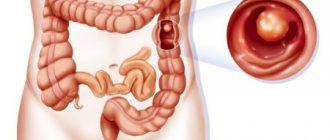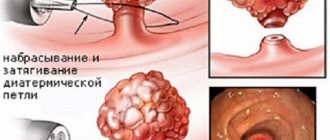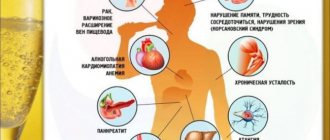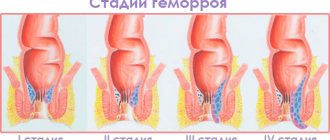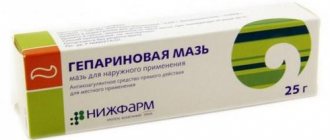What it is
Definition of this disease: mesenteric thrombosis is a violation of blood circulation in the mesenteric vessels due to their blockage. Occlusion leads to acute ischemia, followed by the development of intestinal infarction and peritonitis.
Often the upper branches of the blood vein are damaged.
Pre-elderly and elderly people are at risk. They may have a predisposition in the form of a blood supply disorder, neoplasm, surgery or injury.
Prevention
Intestinal vascular thrombosis is much easier to prevent than to then cure and recover after surgery. The main ways to avoid the problem include:
- increasing physical activity, performing sets of exercises aimed at improving health;
- regular visits to the doctor. It is important to undergo regular examination, especially if a person is at risk or if he has symptoms of the disease;
- quit smoking. This habit provokes thrombophlebitis, inflammation of the vascular wall, and increased blood clotting;
- special attention should be paid to proper nutrition. Firstly, excess weight provokes increased stress on the vascular walls. Secondly, a number of products provoke the development of atherosclerosis (the root cause of blood clots). Therefore, the basis of the diet should be vegetables, fruits, and whole vegetables. But it is recommended to completely avoid sweets, animal fats, smoked foods, and spices, or at least reduce the consumption of such products to a minimum.
Read on the topic: Lymphostasis of the lower extremities - what it is and how to treat it, photo
Needless to say: in order to prevent intestinal thrombosis, as well as a number of other diseases of the abdominal organs, it is necessary to follow all of these recommendations in full, and not just some of them. If you follow such recommendations, then it is possible to completely prevent the development of pathology as such.
Forms and stages
According to the course format, chronic and acute are distinguished.
It can be localized only in arteries, veins, or have a mixed type. First, blood flow is disrupted in the mesenteric arteries, then in the veins. The upper branches suffer more than the lower branches. According to the degree, venous mesenteric thrombosis is divided into 3 stages:
- Compensatory. It is considered a chronic form, blood circulation is carried out due to healthy vessels.
- Subcompensatory. Partial blood supply to the intestinal tract is maintained.
- Decompensation. A severe stage characterized by irreversible consequences. There is no blood flow in the intestines, which leads to the development of a heart attack. The first phase is 2 hours, during which time there is a chance to reverse the process. After 4 hours, the next one occurs - gangrenous damage to the organ develops. This often ends in disaster.
The clinical picture of mesenteric thrombosis and symptoms can be different and make themselves felt not immediately, but some time after the development of the disease.
Treatment methods
Treatment of intestinal thrombosis is carried out only surgically. Gentle methods are ineffective and are used only to consolidate the result before and after surgery in order to reduce blood clotting. Surgery must be immediate. Before this, it is important to confirm the presence of pathology using diagnostic methods.
During the postoperative period, the patient must remain in bed for some time.
A computed tomography scan of the small intestine for thrombosis will help confirm the diagnosis. During surgery, the abdominal cavity is opened. Thanks to this, it is possible to eliminate the existing blood clot. A prosthesis is installed in place of the removed portion of the vessel.
If necessary, bypass surgery is indicated. This creates a bypass for blood flow. The purpose of the operation is to save the patient's life. Any delay can pose a huge danger. The prognosis for intestinal thrombosis after surgery is favorable only if all recommendations are followed. Surgical intervention is indicated for absolutely all patients with a confirmed diagnosis.
From the video you will learn about the causes, symptoms and methods of treatment of intestinal infarction:
Why does it occur
A trombone mass can form due to excessive blood clotting. Hypercoagulability can be acquired, genetic or congenital.
The inner layer of the blood vessel wall takes part in various body processes. These cells synthesize substances that give the command to trigger coagulation.
In a normal state, they are fenced off from the bloodstream by walls; they penetrate into it when the cells are damaged. This can happen due to injury and a gap in the body's all-round defense against aggressive factors.
Against the background of trauma, surgery and other influences, cell walls become permeable. Small blood clots begin to form in it, which subsequently clog it.
Stagnation of blood leads to its stratification into fractions, which, when sticking together, form trombone masses. The reason may lie in insufficient activity or oncological pathologies.
It turns out to be a vicious circle: due to impaired blood circulation, traffic jams form.
Neoplasms in the abdominal area and interlacing of veins are also causes of intestinal infarction or ischemia. Against the background of compression of the arterial vein and blocking of natural blood flow.
Reasons for development
Experienced specialists know the causes of intestinal thrombosis, what it is and what the possible consequences are. The development of this pathology is based on a decrease in the lumen of the vessel due to the formation of a thrombus (blood clot). For the development of thrombosis, the following conditions are necessary:
- Damage to the vascular wall. The arteries of the intestine are lined internally with endothelium. If its integrity is violated, fibrin and other substances that contribute to blockage of blood vessels can accumulate.
- Reduced blood flow speed.
- Increased blood clotting.
The formation of a blood clot is a complex process. Initially, increased platelet aggregation (sticking) is observed. They glow in areas with damaged endothelium. Fibrin is then formed, which thickens. Platelets are joined by other blood cells (erythrocytes, leukocytes) and blood plasma proteins. A blood clot forms, which is initially unstable.
Not everyone knows the risk factors for the development of intestinal thrombosis and the causes of this pathology. The development of the disease is promoted by:
- Damage to mesenteric arteries by atherosclerotic plaques. This pathology is caused by an increase in low-density lipoproteins in the blood. Forming plaques damage the inner lining of blood vessels, which facilitates the formation of blood clots.
- Vasculitis (inflammatory vascular diseases).
- Hypertonic disease. High pressure (more than 139/89 mmHg) contributes to faster wear and tear of blood vessels and their damage.
- Congenital and acquired heart defects.
- Previous myocardial infarction.
- Imbalance between the coagulation and anticoagulation systems of the blood.
- Arrhythmias.
- Aortic aneurysm.
- Rheumatism.
- Surgical interventions on blood vessels.
- Tumors.
- Obesity.
- Smoking.
- Injuries.
- Sedentary lifestyle. Mesothrombosis is possible during long flights and transfers, because in this case the blood flow slows down.
- Autoimmune diseases.
- Hereditary predisposition.
Important information: How to treat thrombosis of the subclavian vein (artery) and its symptoms
Why is it dangerous?
This disease can develop in any part, the scenario is as follows: blockage of a blood vessel - necrosis. The danger depends on what will be affected. So, thrombosis of the heart arteries or in the abdominal cavity is a heart attack. Parts of the brain - stroke.
This organ is located inside a membranous “sac” consisting of connective tissue. In another way, it is called mesentery or mesentery. Due to blockage of the venous arteries, doctors make this diagnosis.
Mesenteric thrombosis: symptoms, diagnosis and treatment
Mesenteric intestinal thrombosis is considered to be a pathology of older people. The average age of patients is 70 years. Often the victims are women. Considering the age of the patient, it is not only the diagnosis that is difficult, but also the treatment tactics. What do you need to know about the disease?
Blood supply to the intestines
The intestine is a part of the digestive system whose function is to:
- digestion of food;
- absorption of useful and nutrient substances;
- formation of the immune system;
- hormone production.
According to medical statistics, the leading place among gastrointestinal diseases is given to intestinal diseases. Deep vein thrombosis is also quite common. The small intestine is supplied with blood by the celiac trunk and the superior mesenteric artery, and the large intestine by the inferior and superior mesenteric arteries. When blood flow is disrupted, ischemia develops.
The arteries and veins passing through the mesentery are responsible for the blood circulation of the abdominal organs, primarily the intestines.
Why is primary arterial blood flow disrupted?
Vascular diseases are caused by impaired arterial or venous circulation. If the flow of arterial blood is disrupted, then the tissues cease to receive enough oxygen and useful elements. This leads to their death. Arterial obstruction can develop gradually or acutely.
The acute course is the most dangerous. Acute mesenteric thrombosis is a dangerous pathology that a surgeon encounters in his practice. It leads to extensive tissue necrosis.
In addition, unpleasant symptoms occur:
- pain;
- marble skin tone;
- paresthesia;
- loss of sensitivity.
In a chronic course, the diameter of the artery decreases gradually. Various vessels are affected: mesenteric, carotid, renal, coronary. The intensity of symptoms depends on the degree of blood flow disturbance.
Thrombosis of mesenteric vessels can develop against the background of the following disorders and diseases:
- Raynaud's syndrome;
- arterial insufficiency;
- blockage of blood vessels with foreign particles;
- blockage of blood vessels with blood clots;
- obliterating atherosclerosis or endarteritis.
Thrombosis of mesenteric vessels is a blockage of the vessels of the mesentery (mesentery) by a thrombus
Forms of ischemia
In medicine, intestinal ischemia is divided into acute and chronic. The acute form is characterized by three stages of development:
- Compensated. This stage is considered the easiest. With timely treatment, blood flow is completely restored.
- Subcompensated. Blood supply occurs through collateral circulation.
- Absolute. This is a severe form. If blood flow is not restored in time, intestinal gangrene occurs.
The chronic form is characterized by gradual compression of the intestinal mesentery. Ischemia occurs latently. Blood flow is carried out through a system of collaterals.
Mesenteric thrombosis, like any other, is directly related to cardiovascular and blood diseases
Thrombosis of mesenteric veins and mixed form of blood flow disorders
Acute disruption of blood flow often develops due to blockage of the venous vessels, which covers an entire area of the mesentery. This pathological condition occurs due to increased blood clotting and disturbances in central and peripheral hemodynamics.
When venous vessels are blocked, the following is noted:
- Diarrhea. Mucus and scarlet blood appear in the stool.
- Painful sensations. The pain is dull, but after eating it becomes sharp and is localized below the navel.
- Inflammation of the peritoneum. The abdomen is distended, vomiting and nausea are present. There is no peristalsis. In addition, the patient's body temperature rises, breathing becomes intermittent, and the heartbeat slows down. In severe cases, delirium and confusion may occur.
When the veins are blocked, the prognosis for a person is favorable, since there is no total damage and the intestines continue to be supplied with arterial blood.
In medical practice, there are rarely cases when a blockage of a venous vessel is diagnosed in one part of the intestine, and in another - an arterial one.
Symptoms
First of all, it is necessary to emphasize the first, striking sign that cannot be ignored - acute, unbearable pain in the abdomen.
The location of the pain syndrome depends on which part of the circulatory system is damaged. The causes of thrombosis of mesenteric vessels have already been discussed, so you need to know in what form the symptoms already tend to manifest themselves:
- In the early stages: nausea, gag reflex, fever, diarrhea. There may be blood streaks in the stool.
- At later stages, the patient may complain of rare stools. This occurs due to the disappearance of the peristaltic reflex of the intestinal tract. That is, a wave-like contraction occurs, which promotes the movement of fecal matter.
To detect this disease, undergo an examination; you should not delay the visit, so as not to complicate your current condition.
Clinical signs of chronic mesenteric thrombosis
I – a person does not feel changes in the functioning of individual organs, and a blood clot can be detected using angiography;
II – the patient feels pain and discomfort in the intestines after eating food, which is why he often refuses it;
III – complaints of constant abdominal pain, diarrhea and flatulence;
IV – acute pain in the abdomen (popularly called “acute abdomen”), at this stage peritonitis and gangrene begin to develop.
At the first stage, it is very difficult to identify the disease.
When and who to contact
Seeing a doctor is most often postponed if the patient has vomiting, diarrhea, or abdominal pain. They can be confused with food poisoning.
Consult a doctor in the following cases:
- diarrhea gives way to constipation;
- lump below the navel;
- unbearable pain in the abdomen, up to a state of shock;
- The muscles of the anterior abdominal wall are tense.
This is treated surgically. The patient requires emergency care for thrombosis of the mesenteric vessels.
If you feel that your condition is getting worse, call emergency medical help immediately.
Thrombosis of mesenteric vessels: symptoms, diagnosis and treatment
From this article you will learn: the causes and symptoms of mesenteric thrombosis, why it is dangerous. Methods of prevention and treatment.
Stoyanova Victoria, doctor of the 2nd category, head of the laboratory at the diagnostic and treatment center (2015–2016).
articles:
Thrombosis of mesenteric vessels is a blockage of the vessels of the mesentery (mesentery) by a thrombus. The mesentery is a collection of mesenteric cords with which the abdominal organs are attached to the abdominal wall. This is a very dangerous condition.
The arteries and veins passing through the mesentery are responsible for the blood circulation of the abdominal organs, primarily the intestines. And if a blood clot clogs a mesenteric artery or vein, this will lead to severe intestinal dysfunction and, if left untreated, to death.
Mesenteric thrombosis is treated with surgery. Treatment is carried out by a surgeon.
The disease is accompanied by a very high mortality rate due to its transience and difficulties in diagnosis.
Causes
Mesenteric thrombosis, like any other, is directly related to cardiovascular and blood diseases. Blood clots form during heart failure, inflammatory processes in blood vessels, after myocardial infarction, arrhythmias, cardiosclerosis, aneurysms of the cardiac septum and blood vessels, and inflammation of the heart.
The risk of thrombosis increases with:
- thrombophilia (hereditary predisposition to the formation of blood clots);
- surgical operations and injuries;
- long-term use of medications that increase the “viscosity” of the blood (antitumor drugs, oral contraceptives);
- prolonged immobilization of the body (in bedridden patients or disabled people in a wheelchair, when lying down in the postoperative period);
- pregnancy and the postpartum period;
- diabetes mellitus;
- obesity;
- smoking.
Regardless of where the blood clot forms, it can clog any artery or vein, including the mesenteric one.
The risk that a blood clot will block the mesenteric vessel increases with severe infectious diseases of the intestine and its tumors.
Vessel in section, on an enlarged scale. The process of thrombus formation in atherosclerosis
Symptoms and stages
The disease occurs in three stages:
- Ischemia. When the lumen of the vessel is narrowed by 70% or more due to a blood clot, a lack of blood circulation in the intestine develops.
- Intestinal infarction is the death of the area of the intestine that was supplied by the affected vessel.
- Peritonitis is inflammation of the peritoneum, increasing intoxication of the body. This stage can be fatal.
Symptoms of thrombosis of intestinal mesenteric vessels :
Stage Description of symptoms
| Stage 1 – ischemia | Paroxysmal or constant abdominal pain, diarrhea, vomiting containing bile. |
| Stage 2 – intestinal infarction | Constipation, small amounts of blood in stool. Severe abdominal pain that can cause painful shock. Bloating. Repeated vomiting is possible. Sometimes – pallor and blue tint of the lips, increased blood pressure. |
| Stage 3 – peritonitis | High body temperature, tension in the muscles of the abdominal wall, sharp pain in the abdomen, which may disappear for several hours, and then appear with renewed vigor. |
Thrombosis can occur very quickly, so when the first symptoms appear, call an ambulance, as the patient needs emergency surgery. Symptoms characteristic of stage 1 may also indicate appendicitis, as well as acute gynecological diseases. They also require urgent surgical intervention.
Diagnostics
It is very important to distinguish mesenteric thrombosis from other intestinal diseases (appendicitis, perforated duodenal ulcer), as well as from gynecological diseases (for example, ectopic pregnancy, ruptured ovarian cyst).
If the symptoms described in the previous section of the article are present, an ambulance takes the patient to the surgical department.
The diagnosis is made by a surgeon. It includes collecting anamnesis and currently present symptoms, and manual examination of the patient. Next, a blood test, coagulogram (blood clotting test), urine test, ultrasound of the abdominal cavity, emergency angiography of the abdominal vessels are prescribed.
If the diagnosis cannot be established, they resort to laparoscopy - an invasive diagnostic method. The abdominal organs are examined using an endoscope inserted through an incision in the skin and anterior abdominal wall. The procedure is performed under anesthesia.
Angiography of abdominal vessels. The arrow indicates the site of thrombosis of the inferior mesenteric artery
Treatment and prognosis
Mesenteric intestinal thrombosis is treated with emergency surgery.
It is carried out in several stages:
- First, the blood clot that caused the circulatory disorder is removed.
- Then the affected vessel is reconstructed.
- If the operation is performed not at stage 1, but at stage 2 of the disease, and the area of intestinal infarction is extensive, then the dead part of the organ is removed. At stage 3, if a strong inflammatory process has developed, the abdominal cavity is washed.
The outcome of the disease depends on the stage at which it was identified and treated, as well as on the correctness of the diagnosis.
At stages 2 and 3 of the disease with intestinal infarction, even with successful surgery, about 70% of patients die. This may be due to intoxication of the body from the inflammatory process, the severity of the operation, as well as the underlying disease that caused the thrombosis. At stage 1 of the disease, if the blood clot is removed before necrosis of the intestinal area, the survival rate is much higher.
Therefore, do not delay in contacting a doctor if you experience abdominal pain.
An operation to remove the necrotized part of the intestine. Anastamosis is a special connection of “chain sections”
Prevention
It is better to prevent thrombosis of mesenteric vessels than to treat it later. By taking preventative measures, you can literally save your life.
If you suffer from cardiovascular diseases, or your direct relatives were prone to blood clots, pay special attention to the prevention of thrombosis.
- First of all, eliminate all other risk factors (excess weight, smoking, sedentary lifestyle, taking oral contraceptives). Treat heart and vascular diseases in a timely manner. If you have diabetes, follow all your doctor's recommendations regarding treatment.
- If you are at risk for blood clots (suffer from cardiovascular diseases, diabetes, lead a sedentary lifestyle for health reasons, are overweight due to metabolic disorders, which you currently cannot get rid of), then donate blood once every six months for a coagulogram. This is necessary to detect bleeding disorders. If you are at increased risk of blood clots, you will be prescribed blood thinners to prevent blood clots from forming.
- Treat intestinal diseases in a timely manner. If you are diagnosed with a tumor, do not delay removing it. If you are taking a course of antitumor medications, periodically take blood tests for clotting and take antiplatelet agents or anticoagulants prescribed by your doctor.
- If you have undergone abdominal surgery, follow all doctor's recommendations in the postoperative period. After a blood test, if indicated, your surgeon may prescribe medications to prevent blood clots. Start moving as soon as possible. Walk more if your doctor allows you to. Being active will help prevent not only blood stagnation (which increases the risk of blood clots), but also the formation of post-operative adhesions, which can lead to complications in the future.
- After any operations on blood vessels (not only on the vessels of the abdominal cavity) and on the heart, take anticoagulants or antiplatelet agents prescribed by your doctor.
Folk remedies for the prevention of blood clots
Do not try to replace medications with folk remedies, as the lack of medical treatment prescribed by a doctor can lead to the formation of blood clots and serious consequences. Also, folk remedies may have contraindications, so before taking, consult with a therapist, cardiologist and gastroenterologist.
Recipes:
Ingredients How to prepare How to take
| Black elderberry (flowers) Sweet clover (roots) Cornflower (flowers) Horsetail Elecampane (roots) Wild strawberry (leaves) Lovage (leaves) Horse chestnut (flowers) Lilac (leaves) Viburnum leaves Walnut leaves Plantain (leaves) | Take 1 g of each plant. Pour in 450 ml of water at room temperature. Let it brew for 6 hours. Put on fire, heat to 100 degrees (to a boil) and immediately remove. Place in a warm place. Wait an hour. Strain. | Dosage: 1/3–1/2 cup depending on weight. Receptions per day - 3. Time of administration - 20 minutes after meals. |
| Sequence Calamus rootsColtsfoot (leaves)Tatarnik (flowers)Strawberry leavesMullein flowersHorse chestnut flowersVerbenaMelilotBirch leavesPepper knotweedMoonwort | Take 1 g of each indicated component. Pour 420 ml of boiling water. Prepare a water bath. Place the broth in it and keep for 15 minutes. Remove from the water bath and place in a warm place. Let it brew for 120 minutes. Strain. | Dosage - 1/3 cup. Number of doses per day - 3-4. Time of administration - 20 minutes after a meal. |
Take these medications under the supervision of your doctor.
Stoyanova Victoria, doctor of the 2nd category, head of the laboratory at the diagnostic and treatment center (2015–2016).
Source: https://okardio.com/bolezni-sosudov/mezenterialnyj-tromboz-462.html
Diagnostics
It is important to distinguish this disease in time from appendicitis, performative duodenal ulcer, ruptured ovarian cyst, and ectopic pregnancy.
If thrombosis of mesenteric vessels is detected, diagnosis includes the following procedures:
- taking anamnesis;
- donation of blood, urine;
- coagulogram, angiography;
- Ultrasound examination of the abdominal cavity.
Laparoscopy is performed if the diagnosis cannot be established. The procedure is performed by a surgeon under anesthesia.
The problem of differentiating mesenteric thrombosis and ways to solve it
The problem of identifying mesenteric thrombosis lies in the similarity of its symptoms with other pathologies of the body (appendicitis, gastric and intestinal ulcers, cholecystitis, intestinal obstruction). For differentiation, they resort to laparoscopy, as well as electrocardiography.
If laparoscopy cannot be performed, specialists resort to surgical intervention - laparotomy. It is performed by making an incision along the midline of the abdomen, which makes it possible to reach the intestines and obtain the following data:
- presence and location of blood clots;
- artery pulsation level;
- degree of mesenteric artery thrombosis;
- the size of the area affected by gangrene.
- Angiography of blood vessels in Moscow – Make Angiography
- Who is indicated for and how is ultrasound examination of the blood vessels of the legs performed?
- How to strengthen blood vessels at home
- Burst of a blood vessel on the penis
Treatment methods
Therapy depends on the time of the doctor’s report. This could be medication or surgery. But more often, people come in in extreme form, so treatment is impossible without a surgeon.
Medicines
Appropriate if thrombosis occurs in a chronic form. That is, blood circulation in the mesenteric veins is partially preserved.
Prescribe anticoagulants and disaggregation drugs for parenteral administration. The results of treatment are monitored through periodic blood and urine donations.
Surgery
It is performed for interstitial ischemia occurring in an acute form. Help is provided while the patient is being transported to the clinic. Every missed minute can lead to the death of the patient.
To alleviate the condition, the ambulance team resorts to the following actions:
- removing a blood clot from an area of the intestine;
- surgery on a damaged artery;
- resection of necrotic areas of the intestine;
- mixed type operation.
When the disease occurs at a late stage, surgical intervention is extremely difficult. Literally after 6-12 hours, the patient will be re-operated.
Intestinal thrombosis: causes, symptoms, treatment
Elderly people very often have to deal with a disease such as intestinal thrombosis. Their further condition directly depends on how quickly they get to the hospital and the doctor prescribes individual treatment. In order not to waste precious time, everyone should be aware of the primary symptoms of this disease and subsequently take all necessary measures.
What should you know about the disease?
Blood, as you know, has the property of clotting. In medicine, this process is called coagulation. This is a very important function, without which any person, after receiving wounds, would lose all his blood and, accordingly, die. On the other hand, coagulation promotes the formation of clots over time, otherwise known as thrombi. According to experts, they can form in absolutely any part of the body. For example, when they enter an intestinal artery, blood clots consistently clog its lumen, thereby preventing normal nutrition of a certain area of the organ. As a result, tissue necrosis in the intestine is observed. This disease is called thrombosis (mesenteric) of the intestine. In particularly serious cases, it can be fatal.
Mesenteric intestinal thrombosis is a disease that occurs due to obstruction of the superior, celiac or inferior mesenteric artery. This pathology often causes changes in blood circulation in the digestive tract. According to experts, this disease is equally common among women and men, but it is especially common in older people.
Etiology
Unfortunately, today absolutely no one is immune from this disease. However, doctors name a number of predisposing factors that primarily provoke the development of a pathology such as intestinal thrombosis. The reasons may be as follows:
- Atherosclerosis (vascular disease characterized by the sequential formation of plaques, the rupture of which leads to the formation of blood clots).
- Myocardial infarction.
- Hypertension (high blood pressure).
- Thrombophlebitis (an inflammatory process localized in the veins of the legs and accompanied by stagnation of blood).
- Endocarditis (inflammation of the inner lining of the heart, leading to the formation of blood clots).
- Sepsis (blood poisoning).
- Rheumatism (a disease affecting the connective tissue, resulting in the development of heart disease).
- Postpartum thrombosis.
Often, for example, thrombosis of the small intestine develops immediately after surgical manipulations on other organs. However, in this case, the patient has a greater chance of survival, since for some time after the operation he is under close medical supervision. In such situations, the specialist immediately makes a decision on treatment. An anticoagulant or any other drug that dilutes the clot is administered.
Primary clinical signs
Experts say that in the initial stages of development it can be very difficult to diagnose intestinal thrombosis. The symptoms listed below always act as an alarm bell and should alert everyone.
- Sudden pain in the abdominal area that occurs immediately after the next meal.
- Pallor of the skin, dry mouth, perspiration.
- Nausea and vomiting, bowel dysfunction (constipation or diarrhea).
- Flatulence.
- Low pressure.
- The presence of bloody discharge in the stool.
If the above symptoms appear, it is recommended to immediately seek help from a doctor. The sooner treatment begins, the higher the chances of successful recovery. Otherwise, the likelihood of complications developing is very high. After a blood clot blocks the lumen in the intestine, blood circulation in this area is disrupted. As a result, intestinal infarction is observed (spasm provoking tissue necrosis). As a result, peritonitis develops or major internal bleeding occurs into the peritoneum. In the absence of timely qualified assistance, the likelihood of death is very high.
Main stages of the disease
Experts conditionally divide intestinal thrombosis into three stages of development:
- Intestinal ischemia. At this stage of the disease, the affected organ can still be restored. Patients are constantly accompanied by unbearable pain in the abdominal area and vomiting with bile. The stool becomes liquid.
- Intestinal infarction. The disease does not stand still in its development. As a consequence, some changes sequentially occur in the affected organ, as a result of which intoxication of the entire organism is observed. Loose stools give way to constipation, and now blood can be found in the stool. The pain in the abdominal area becomes unbearable, the skin turns pale and then acquires a bluish tint.
- Peritonitis. At this stage, the body is clearly poisoned by toxins, and disturbances in the functioning of the circulatory system occur. The pain may stop temporarily, but it is replaced by quite severe vomiting, and stool becomes literally unpredictable. Inflammation only intensifies over time. Very soon paralysis occurs, resulting in stool retention. There is hypotension and a slight increase in body temperature.
Classification
Depending on whether there is a systematic restoration of blood flow after its blockage, doctors divide the further course of the disease into three types:
- Compensated (blood circulation in the intestines gradually returns to normal).
- Subcompensated (only partial recovery is observed).
- Decompensated (it is impossible to normalize blood circulation, as a result, intestinal infarction is observed).
How to independently diagnose intestinal thrombosis?
It is very important to constantly monitor the condition of your body. If you experience pain in the abdomen and bloody stool, you should immediately seek help from a doctor, as there is a possibility of a disease such as intestinal thrombosis. Symptoms may vary for each individual patient. So, some people's skin turns pale, their temperature rises to 38 degrees, hypertension appears, and then a sharp drop in blood pressure is observed. All these clinical signs should alert you. In this type of situation, it is recommended to call an ambulance. It is important to remember that any delay can literally cost your life. If a person does not go to the hospital with these symptoms, we can confidently say that the disease will end in death.
The main diagnostic methods in a medical institution
When admitted to hospital with suspected intestinal thrombosis, the patient is usually subjected to a detailed diagnostic examination. It involves the following procedures:
- History and visual examination.
- Blood test for ESR level and leukocyte count (in case of thrombosis, these indicators are overestimated).
- Radiography.
- Computed tomography (allows you to examine the condition of internal organs in as much detail as possible).
- Diagnostic laparoscopy (the doctor makes a puncture on the skin, through which a tube with a camera at the end will be inserted, the image from which is displayed directly on the computer screen).
- Diagnostic laparotomy (performed when laparoscopy is not possible).
- Vascular angiography using a contrast agent (this test can check the degree of blockage of blood vessels).
- Colonoscopy.
- Endoscopy.
Conservative therapy
When a patient enters the hospital, the doctor first assesses at what stage of development the intestinal thrombosis is. Treatment through conservative methods is usually used if the disease has not begun to progress. Here are used:
- A parenteral method of administering anticoagulants, the main purpose of which is to thin the blood. The most commonly used drug is Heparin and some of its analogues.
- Injections of thrombolytics and antiplatelet agents (medicines “Trental”, “Reopoliglyukin”, “Hemodez”).
Despite the fairly high mortality rate from this disease, if treated in a timely manner, there is a good chance of a complete recovery for the patient.
Surgery
If mesenteric intestinal thrombosis progresses, or the disease cannot be overcome with medication, the doctor prescribes surgery, and drug therapy acts as an additional treatment.
In the case of intestinal ischemia, the disease rarely goes away on its own, however, as a preventive measure, antibiotics are recommended to remove toxins from the body.
The operation involves the removal of damaged organ segments and subsequent stitching of healthy tissues together. In some cases, bypass surgery is additionally required. During this procedure, the specialist creates a “bypass” around the blocked vessel so that the blood can move further.
If thrombosis of intestinal vessels occurs in an acute form, surgical intervention is also prescribed. The doctor independently determines what exactly needs to be done (remove a blood clot, perform angioplasty, bypass surgery, etc.). These manipulations help stop the development of the disease, subsequently tissue necrosis does not appear.
Rehabilitation
After all surgical procedures, the patient usually spends some more time in the hospital. Over the next two weeks, he is contraindicated for any physical activity. Otherwise, you can provoke a hernia.
During rehabilitation, doctors recommend bed rest and, if necessary, massage the abdomen yourself, lightly stroking it clockwise.
It is very important to follow all recommendations from doctors. After all, only in this way can you forget forever about such a problem as intestinal thrombosis.
After surgery, it is equally important to adhere to a dairy-vegetable diet. The diet should consist of rice porridge, fruits, lean boiled meat/fish, and dairy products. All canned and smoked foods, alcoholic beverages, garlic and onions are prohibited. It is not recommended to drink whole milk in the first month after surgery, so as not to provoke digestive upset.
In conclusion, it should be noted that timely treatment of this disease almost always results in complete recovery. You should not delay visiting a doctor and subsequent therapy.
Prevention and prognosis
If a person begins to take timely preventive measures, this will help save life.
So, what needs to be done to maintain health.
- Get rid of nicotine and alcohol addiction. Start eating right and moving more, playing sports.
- Get examined every six months. Donate blood and urine.
- Completely treat intestinal pathologies.
If surgery was performed, follow the surgeon's recommendations. Even if you feel that it has become much better, do not start treatment, continue to the last course.
Causes
There are two main mechanisms for blockage of intestinal vessels. The first is the formation of a blood clot in another part of the circulatory system, its separation and drift into the mesenteric vessels. The second is the formation of a blood clot directly in the arteries or veins of the mesentery. As a result, arterial or venous thrombosis develops. Blockage of intestinal vessels can develop for the following reasons:
- Pathologies of the cardiovascular system (myocardial infarction, atherosclerosis, hypertension, heart disease, arrhythmia, aortic aneurysm, endocarditis).
- Cirrhosis of the liver.
- Neoplasms and injuries of the abdominal cavity.
- Thrombophlebitis of the lower extremities.
- Connective tissue diseases.
- The period after childbirth or surgery.
- Inflammatory process of blood vessels: periarteritis, thromboangiitis, vasculitis, obliterating endarteritis.
- Vascular spasm in response to medication or allergic reactions.
- Congenital tendency to form blood clots.
- Sepsis.
Important! The risk of developing intestinal thrombosis increases with poor nutrition, a sedentary lifestyle, bad habits and various chronic diseases.
Forecasts
If the patient seeks medical help at stage 2-3, the chances of recovery are extremely low. The maximum level of survival is stage 1.
The blood clot is removed until necrosis has formed. A blood clot can clog any vein or artery; this is associated with severe intoxication of the body.
People who suffer from acute disorders of mesenteric circulation at the stage of decompensation die without surgical intervention. Therefore, seeking medical help and undergoing an examination is necessary. Then the chances of recovery increase several times.
Treatment
Acute intestinal thrombosis requires radical treatment. Conservative therapy is of auxiliary value. The earlier treatment is started, the better the prognosis.
Conservative therapy
Conservative treatment of mesenteric intestinal thrombosis includes:
- Restoration of circulating blood volume.
- Intensive therapy.
- Detoxification of the body.
- Normalization of heart function and stabilization of blood pressure.
- Drainage and sanitation of foci of infection.
- Use of medications. To prevent recurrent thrombosis, antiplatelet agents and anticoagulants (Aspirin, Curantil, Heparin, Clopidogrel) can be used. For fresh thrombosis of the mesenteric vein or artery, fibrinolytics (Streptokinase or Urokinase) can be prescribed. Painkillers and antispasmodics are also indicated. For infectious complications (peritonitis), broad-spectrum antibiotics are indicated.
- Combating paralytic ileus. Proserin in the form of an injection solution and analgesic blockades with novocaine are shown.
Important information: How to treat acute thrombosis of the external (external) hemorrhoid (veins) at home and how quickly does thrombophlebitis of the anus (rectum) go away?
Surgery
Thrombosis of the mesenteric arteries may require the following interventions:
- Revascularization (restoration of blood flow). Achieved through thromboendarterectomy (removal of a blood clot from the affected vessel).
- Bypass surgery. In case of thrombosis of the mesenteric artery, a shunt can be installed between the artery and the aorta below the thrombosis zone.
- Replacement of the superior mesenteric artery.
- Partial or extensive bowel resection. Required for tissue necrosis. The operation is complemented by drainage.
- Relaparotomy.
- Formation of anastomosis.
Diagnostics (hospital)
Diagnosis is based primarily on the clinical picture and a correct assessment of the medical history. In the prehospital period, diagnosis is difficult. Only 15.3% of patients are admitted to the hospital in the first 6 hours, less than half are hospitalized on the first day, the rest - on the 2-4th day and later. Ambulance and emergency doctors are not sufficiently aware of the initial symptoms of the disease.
1. If an acute disorder of mesenteric circulation is suspected, the patient must be urgently hospitalized.
2. The diagnosis must be confirmed or rejected as soon as possible.
1. Symptom of thickening of the intestinal wall.
2. Symptom of edema and destruction of the intestinal mucosa.
3. Symptom of intramural gas.
4. Symptom of homogeneous darkening of the abdominal cavity (V.I. Kolerova, 1962). In the images, a darkening zone appears corresponding to the intestine, so that the edge of m becomes indistinguishable. ileopsoas. This symptom is explained by the appearance of fluid in the intestines.
The blood test reveals an extremely high leukocytosis, which is not found in any other acute disease of the abdominal organs, a shift in the leukocyte formula to the left to rod-nuclear and young neutrophils. Severe hypoproteinemia during intestinal infarction and peritonitis against the background of a reduced volume of circulating blood indicates enormous absolute protein losses.
Differential diagnosis is carried out with the following diseases: acute appendicitis, acute cholecystitis, perforated gastric or duodenal ulcer, acute pancreatitis, intestinal obstruction, myocardial infarction, infarction of the kidney and spleen.
Angiographic examination is considered the main special method for diagnosing acute disorders of mesenteric circulation. Using angiography, the type of blood flow disturbance, the localization of occlusion, the extent of the lesion, and the ways of collateral compensation of blood flow are determined, which largely determines the tactics for surgical intervention.
Angiographic examination is primarily indicated in diagnostically unclear cases. In diagnostically clear cases, angiography is indicated for short periods of time since the disease, and only when the doctor is convinced that a delay in surgery due to angiography will not lead to intestinal necrosis.
If significant time has passed since the onset of the disease, it is advisable to begin surgery immediately. Angiographic examination, if necessary, can be performed during surgery. In the postoperative period, the study is indicated to solve two problems: 1) exclude arterial rethmbosis after vascular interventions;
At the present stage of medical development, the laparoscopic method for diagnosing this disease is possible in most surgical departments. Laparoscopy can be considered a method for early diagnosis of mesenteric circulation disorders. Based on laparoscopic data, one can judge the stage of the disease, the extent of the lesion, and the degree of destructive changes in the intestine.
In the stages of infarction and peritonitis, the correct diagnosis is made in 100% of cases; in the stage of ischemia, the diagnosis is more difficult. The most complete information can be obtained by combining angiography with laparoscopy. It is logical to assume the possibility of using laparoscopy in the postoperative period to monitor the viability of the intestinal loops remaining after the operation.
Diagnosis of the disease is carried out using special equipment:
- lateroscopy helps to identify an increase in the volume of intestinal loops, which remain when the body is turned from side to side or move to the upper areas of the abdomen;
- An x-ray of the abdominal cavity can give results only at the last stage of the disease;
- Ultrasound provides data that allows one to clearly see changes caused by thrombosis;
- Selective angiography allows you to make the most accurate conclusion (thrombosis of the mesenteric vessels is diagnosed if the main arterial trunk is not detected on angiograms).
As an auxiliary method, digital examination of the rectum is used.
To accurately establish a diagnosis, laboratory blood tests must be carried out; in case of the disease, the following changes in the general blood picture are observed:
- a sharp increase in the number of leukocytes (up to 40-109 / l);
- high ESR;
- the leukocyte formula shifts to the left.
Also, in order to make the correct conclusion, the doctor conducting the research asks to answer the following questions:
- what type of pain was it (paroxysmal or constant);
- how acute the pain was;
- whether the patient suffers from cardiovascular diseases;
- whether disorders of the gastrointestinal tract were observed.
Angiography
Angiography
OUTPATIENT DIAGNOSTICS
Diagnostic criteria
Physical examination (examination, palpation, percussion, auscultation, determination of hemodynamic parameters - heart rate, blood pressure): · blood pressure may increase by 60-80 mm Hg. Art. — Blinov’s symptom [3] (with occlusion of the superior mesenteric artery), bradycardia; · discrepancy between the intensity of pain and physical data when examining the abdomen (in the stage of ischemia, the abdomen is soft, painless;
Laboratory tests: if acute disturbance of mesenteric circulation is suspected, they are not carried out.
Instrumental studies: if an acute disorder of mesenteric circulation is suspected, they are not performed.
DIAGNOSTICS AT THE INPATIENT LEVEL
· “clinical triad”: sudden intense abdominal pain, spontaneous bowel movement (vomiting and diarrhea, with late presentation - mixed with blood); · elderly age; · cardiovascular diseases (atrial fibrillation, atherosclerosis, hypertension), history of hypercoagulable states; · discrepancy between the intensity of pain and physical data when examining the abdomen; · lack of a clear diagnosis.
Complaints and anamnesis: · sudden intense pain in the epigastrium or throughout the abdomen (ischemia stage), which is not relieved by the administration of narcotic analgesics; · nausea, reflex vomiting of gastric contents, later an admixture of blood appears in the vomit; · “ischemic bowel movement” - diarrhea, the appearance of blood in the stool in the form of raspberry jelly;
· nonspecific abdominal pain for several days (with venous thrombosis); · after 6 hours from the onset of the disease, in the stage of infarction, pain decreases (painless interval); · after 12 hours, in the stage of peritonitis, the pain intensifies; · history of risk factors: complicated course of heart disease, rhythm disturbances, hypertension, condition after myocardial infarction, stroke, occlusive diseases of peripheral arteries, condition after heart surgery with artificial circulation, long-term hemodialysis, diabetes mellitus, taking cardiac glycosides, thrombophilia.
Physical examination: The patient’s condition depends on the stage of development of acute mesenteric ischemia. · In the ischemic stage, patients are restless due to severe pain. With occlusion of the superior mesenteric artery, blood pressure may increase by 60-80 mmHg. Art. (Blinov's symptom), bradycardia.
The tongue is moist, the abdomen participates in the act of breathing, is soft and completely painless, there are no symptoms of peritoneal irritation, peristalsis is weakened or absent, the stool is loose. · During the stage of a heart attack, behavior becomes calmer due to a decrease in pain, and euphoria appears against the background of increasing intoxication. Tachycardia.
The tongue is dry, blood appears in the vomit, the abdomen is swollen and soft, there is distinct pain on palpation, and the area of pain does not correspond to the localization of spontaneous abdominal pain. With venous thrombosis, Mondor's symptom appears - palpation of the infarcted intestine in the form of an infiltrate of soft elastic consistency without clear boundaries.
On auscultation, peristalsis is weakened or absent. The stool is loose and mixed with blood. · In the stage of peritonitis, the patient is in a forced position - on his side with his legs brought to the stomach; when changing the position of the body, an increase in pain in the abdomen is noted. The condition of patients sharply worsens due to endotoxemia, and consciousness may be impaired.
Hemodynamics are not stable. The tongue is dry. There are signs of a systemic inflammatory reaction: fever, tachypnea, tachycardia. The abdomen is swollen and painful on palpation. A feature of the clinical manifestation of peritonitis in AMI is the later appearance of muscle tension and the Shchetkin-Blumberg symptom.

